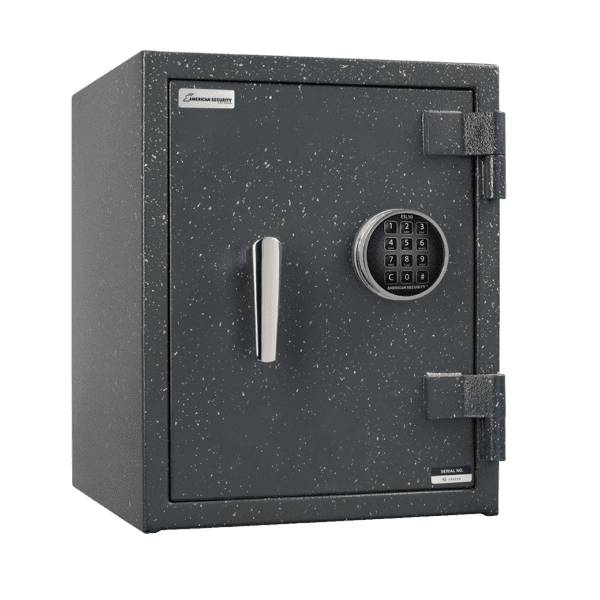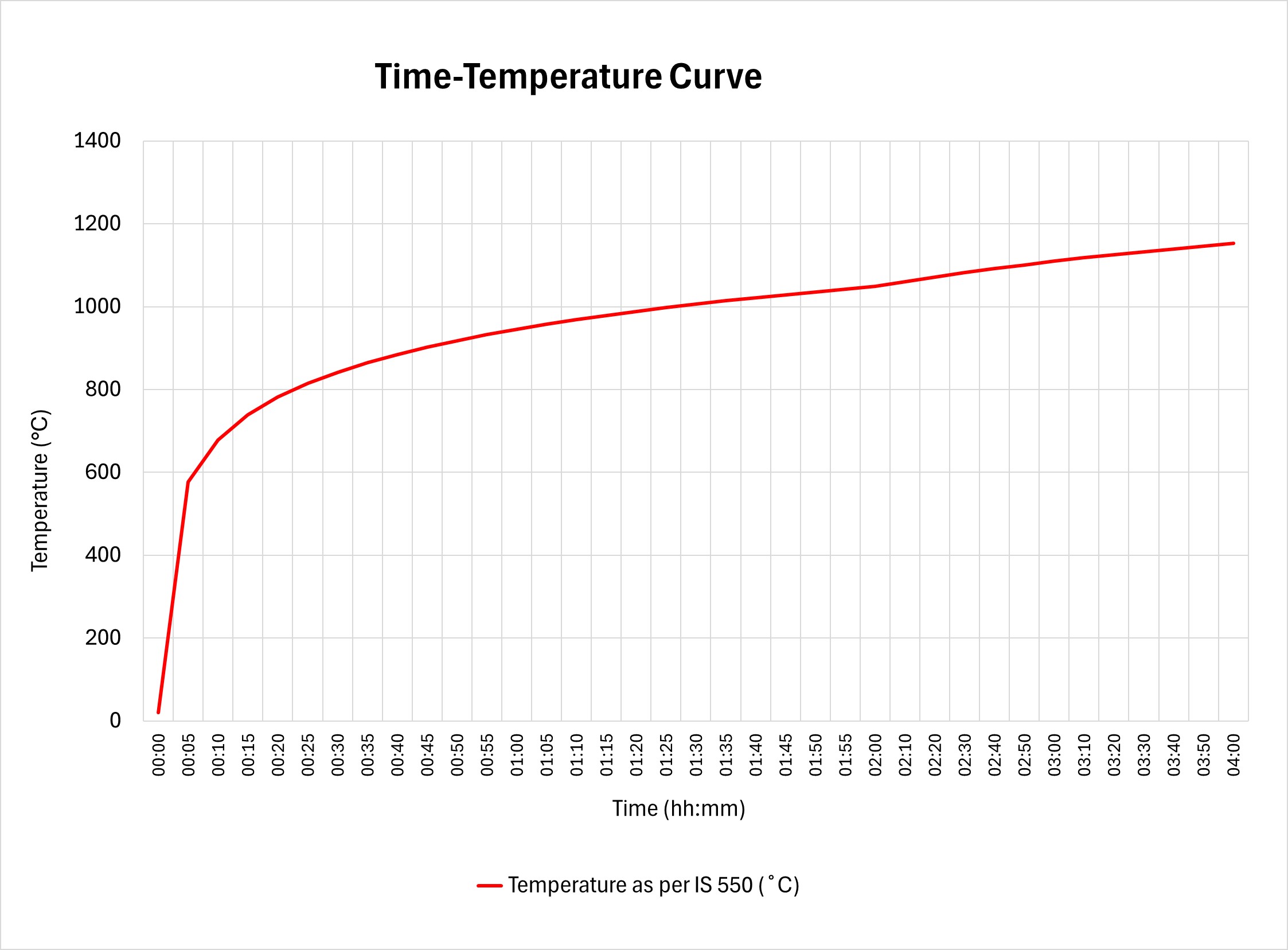Fire Resistance Tests for Safes and Record Storage Cabinets – Standards and Test Procedures
Abhijith Baby, Technical Engineer at Afiti Global Fire Testing Pvt. Ltd.
Abhijith Baby is the Technical Engineer for Resistance to Fire Tests at Afiti Global Fire Testing Pvt Ltd, Chennai, India. His expertise includes conducting resistance to fire tests on various products such as passive and reactive protection for structural steel, load bearing and non-load bearing separating elements and other passive fire protection materials. Previously, he held the position of the testing engineer in charge of NFPA 285 fire tests for exterior wall assemblies at Winwall Technology India Pvt Ltd, Chennai. He holds a bachelor’s degree in Engineering from GCE Bodinayakkanur - Anna University, Chennai.
(Contact: technical@afitiglobal.com)
Introduction
Fire resistance testing for safes and record storage cabinets is crucial to ensure the protection of valuable documents, data, and other sensitive materials during a fire. These tests evaluate the ability of safes and cabinets to withstand high temperatures and prevent internal temperatures from rising to levels that could damage their contents. This article delves into the importance, methodologies, and standards involved in the fire resistance testing of safes and record storage cabinets.

Importance of Fire Resistance Tests
Safes and record storage cabinets are designed to protect important documents, digital media, and other valuable items from fire damage. While the materials used in their construction may have fire-resistant properties, this doesn't guarantee the entire cabinet or safe will protect its contents. Standard fire resistance tests are designed in such a way that the test specimen is exposed to standardised heating and pressure conditions developed based on extensive research and historical data on building fires. This ensures these storage solutions offer the necessary protection, giving users peace of mind and meeting insurance and regulatory requirements.

Figure: Fire resistance test furnace at afiti Global
Fire Resistance Test Standards
The Indian standard for the fire resistance testing of safes is outlined in IS 550 Part 3. Additionally, the specification standards IS 14561 and IS 14203 detail a similar test procedure for filing and record protection cabinets. Comprehensive test procedures are provided in the annexures of these standards.
UL 72 is a widely recognized standard for record protection equipment, such as safes and cabinets. It classifies products based on the type of media they are designed to protect, using three classes: Class 350, Class 150, and Class 125. These classes indicate the maximum allowable rise in internal temperature, measured in degrees Fahrenheit (176.7°C, 65.6°C, 51.7°C respectively).
The European standard EN 14659 is used for the classification and testing of storage units intended to protect paper media during a fire. It provides two categories, LFS 30 and LFS 60, based on the time in minutes for which the temperature rise is limited to 150°C.
Fire Test Procedures
As per IS 550-3, the fire resistance properties of safes are determined by two tests.
- Fire Endurance Test
- Fire and Impact test.
IS 14561 and IS 14203 also specify the same test procedures whereas EN 14659 specify the fire endurance test and does not specify the fire and impact test.
Fire Endurance Test
For the fire endurance test according to IS 550-3, thermocouples are used to measure the internal temperature of the sample safe or cabinet. The internal thermocouples used in the test are placed inside sealed metal tubes. This design gives the thermocouples a higher time constant, which means they respond more slowly to changes in temperature. As a result, this setup helps produce a smoother temperature curve and reduces the impact of sudden temperature fluctuations. The storage area is then evenly filled with contents like currency-grade paper, a file and printed or written paper in envelopes or files to a volume of 20-50%.
The sample is placed in a test furnace, and the furnace temperature is controlled using the following time-temperature curve for IS 550-3:
T - T0 = 345 Log10 (8t + 1)
Where T is the Furnace Temperature in °C, T0 is the ambient temperature at the start of the test in °C and t is the time in minutes.

Graph 1: Time-temperature curve to be followed.
The test runs for a duration of 30 minutes. To pass the test, the internal temperature must not exceed 177°C, irrespective of the initial ambient temperature. After the internal temperature has dropped to approximately 47°C, the safe is removed from the furnace. The contents are then examined to ensure they remain usable. Additionally, the security and integrity of the locking mechanism are thoroughly checked to confirm they have not been compromised during the test.
Fire and Impact Test
Another safe from the same batch, filled with similar contents, undergoes a standard fire exposure test. This test is conducted similarly to the fire endurance test but without using thermocouples to measure internal temperatures.
During the test, the safe is exposed to fire for 15 minutes. After this initial period, the furnace is turned off. The safe is then lifted to a height of 4 meters and dropped onto a pile of brick rubble placed on a concrete floor. Immediately following the drop, the safe is turned upside down and placed back into the furnace. It is then reheated for an additional 15 minutes to assess its performance after the impact.
After completing the test, the usability of the contents inside the safe is evaluated to determine if they have been compromised.
Similarities and differences: IS550-3 v/s other standards
Standards IS 14561 and IS 14203 follow a similar procedure to IS 550-3 for the fire endurance test. However, the duration of the fire endurance test varies based on the required classification, which can be 60, 120, 180, or 240 minutes.
The contents placed inside the cabinets for testing are selected according to the specific requirements of the standards and are filled up to 25-30% of the total storage volume. For the Fire and Impact test, the duration of exposure to fire and the subsequent reheat time are also determined by the required classification – Refer Table 1.
Table 1: Initial exposure and reheat time for fire and impact tests as per IS 14561 and IS 14203.

Fire resistance tests for light fire storage units, as outlined in EN 14659, include a fire endurance test that uses furnace temperature and pressure controls in accordance with EN 1363-1. This European standard specifies the use of 0.5 mm diameter K-type thermocouples with a copper disc tip for measuring internal temperatures within the storage unit, as detailed in
EN 1363-1.
In addition to measuring internal air temperatures, EN 14659 also requires monitoring of internal surface temperatures. This is a key difference from Indian standards, which only specify the measurement of internal air temperatures.
It’s important to note that EN 14659 does not include an impact test, which means that the effects of physical shocks on the storage unit are not assessed under this European standard.
Conclusion
In conclusion, the fire resistance testing of safes and storage cabinets is a critical process that ensures the protection of valuable contents during a fire. Various standards, including IS 550-3, IS 14561, IS 14203, UL 72, and EN 14659, provide detailed methodologies for evaluating the effectiveness of these storage solutions in withstanding extreme conditions.
These standards, while varied, collectively aim to ensure that safes and storage cabinets can safeguard their contents effectively. By adhering to these established procedures, manufacturers and users can be confident that their storage solutions will perform reliably in the event of a fire, offering peace of mind and enhanced security for important documents and valuables.
